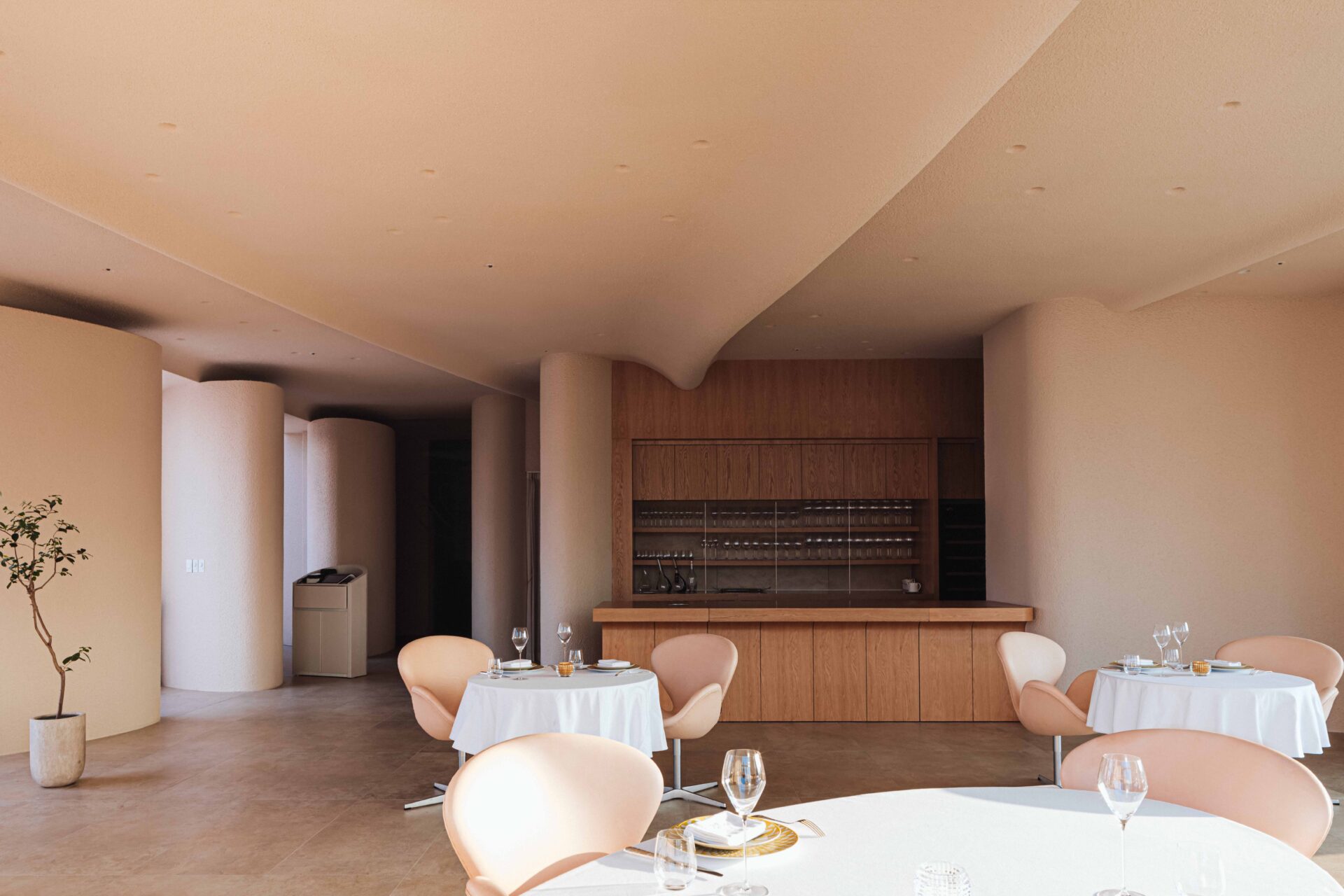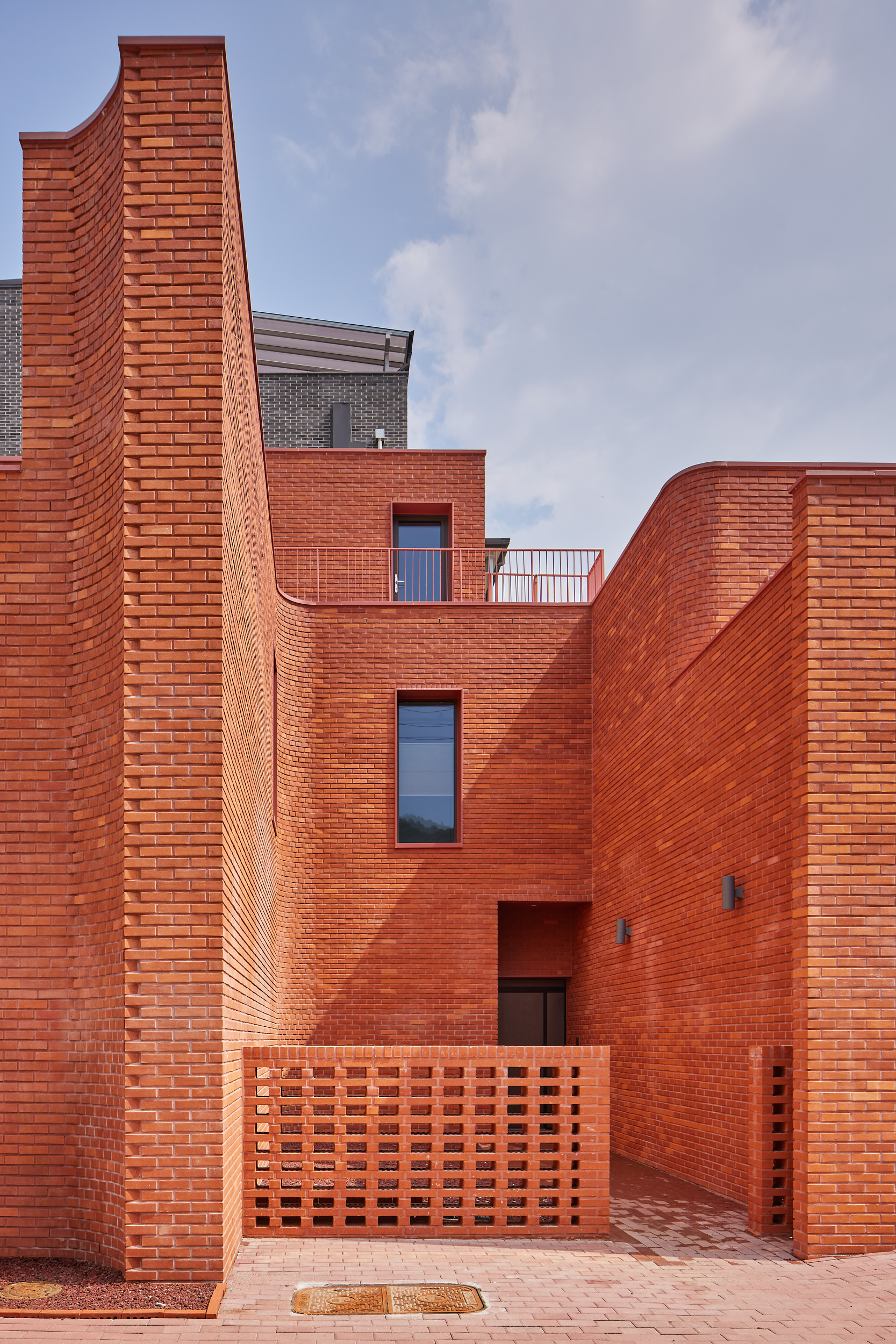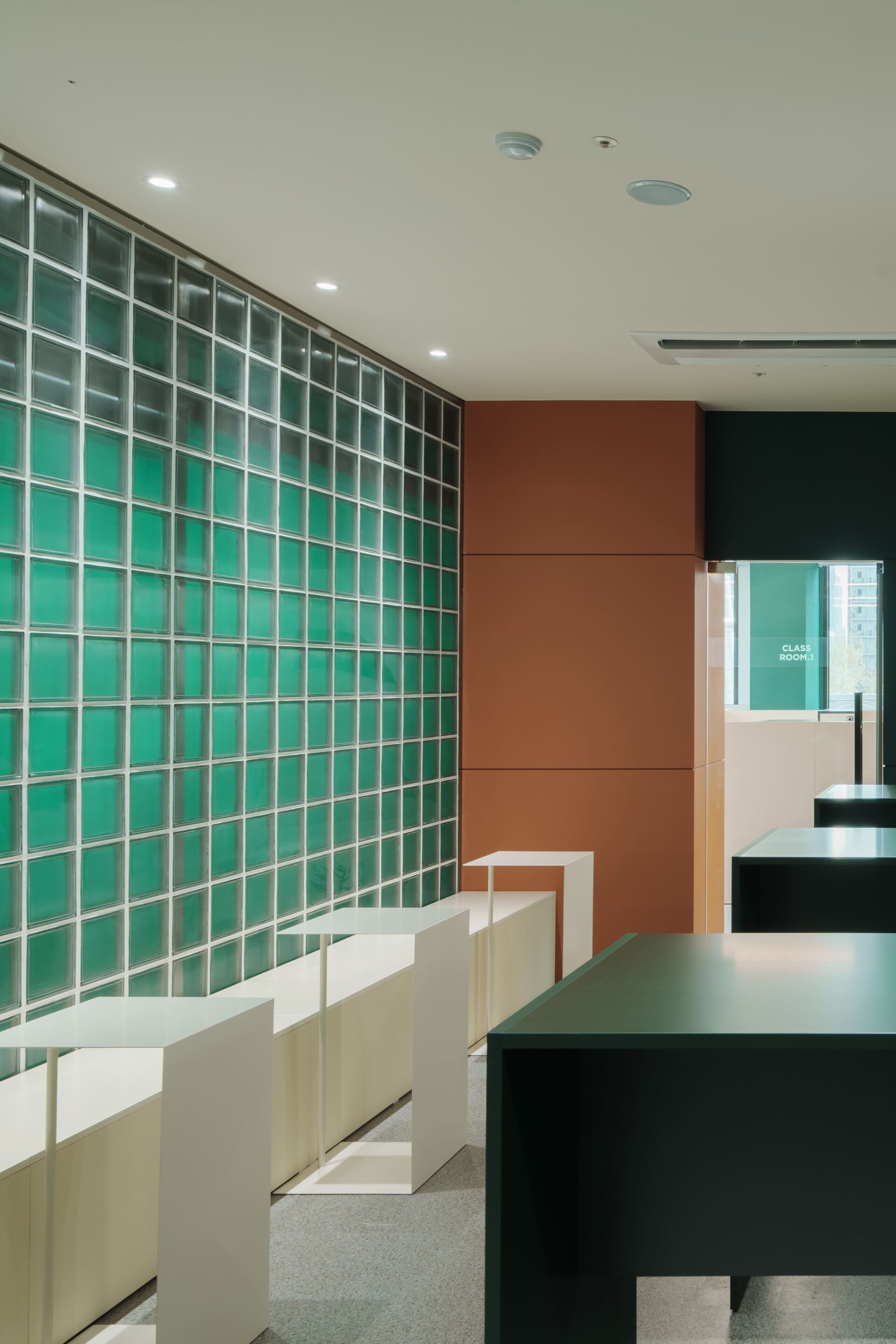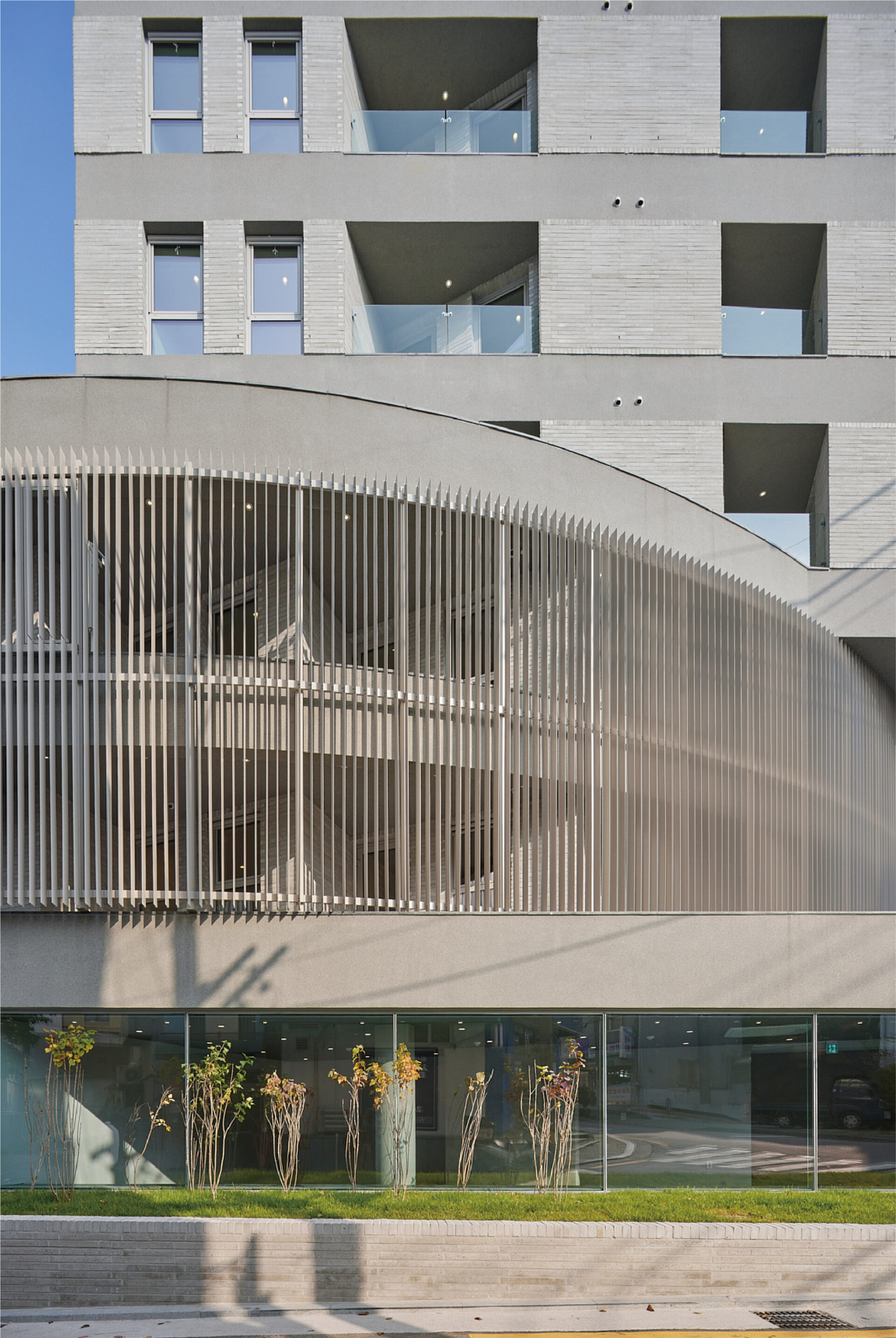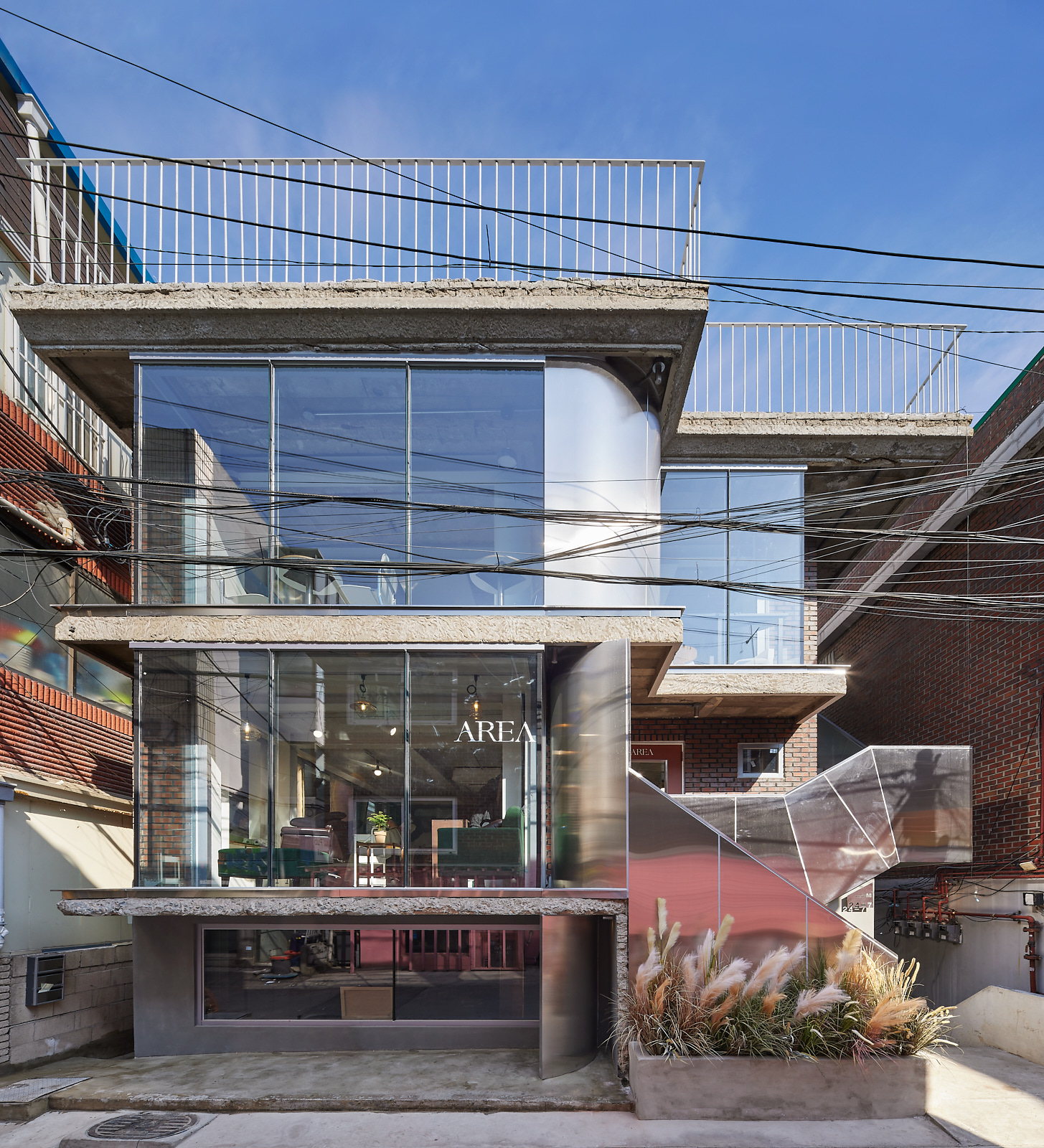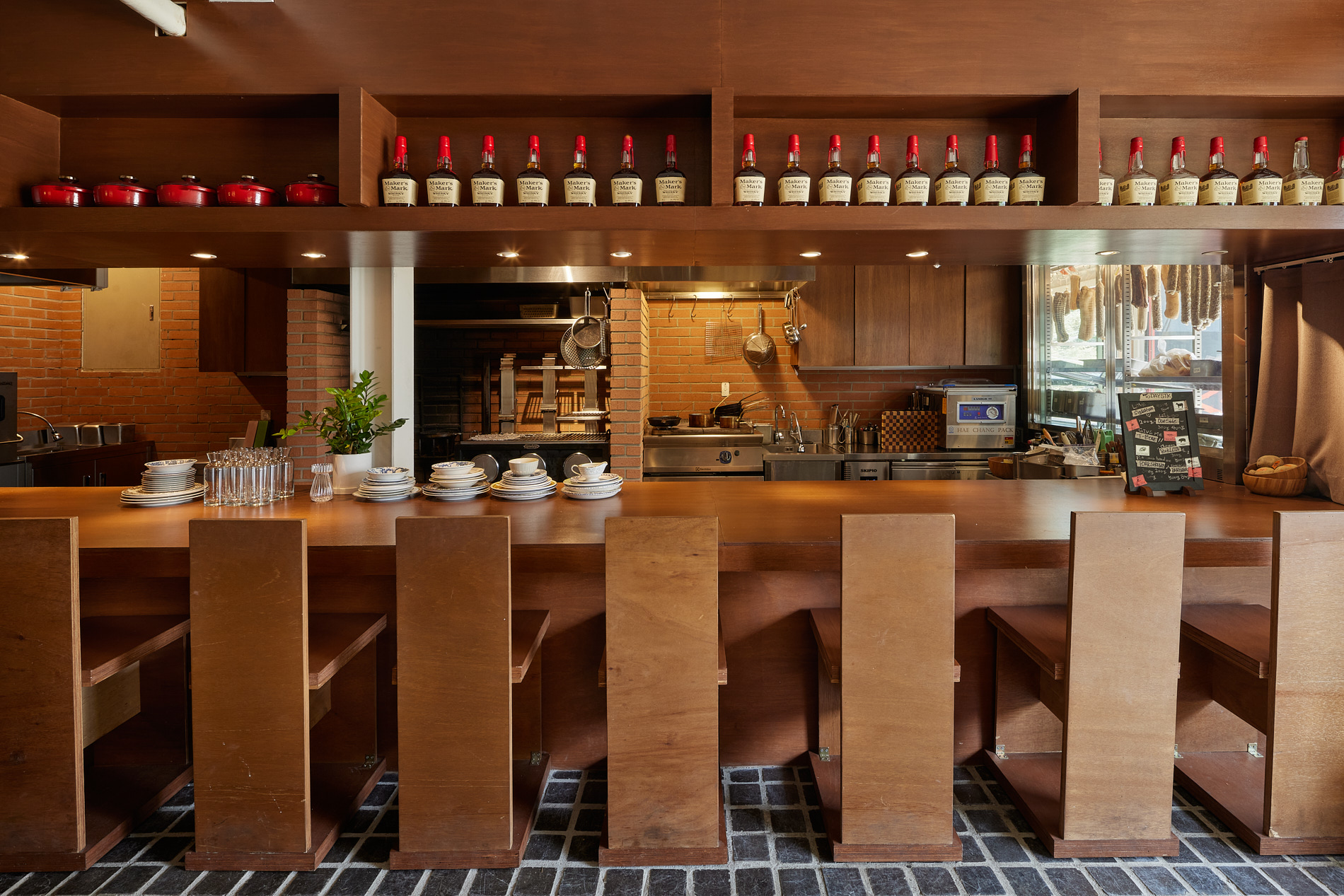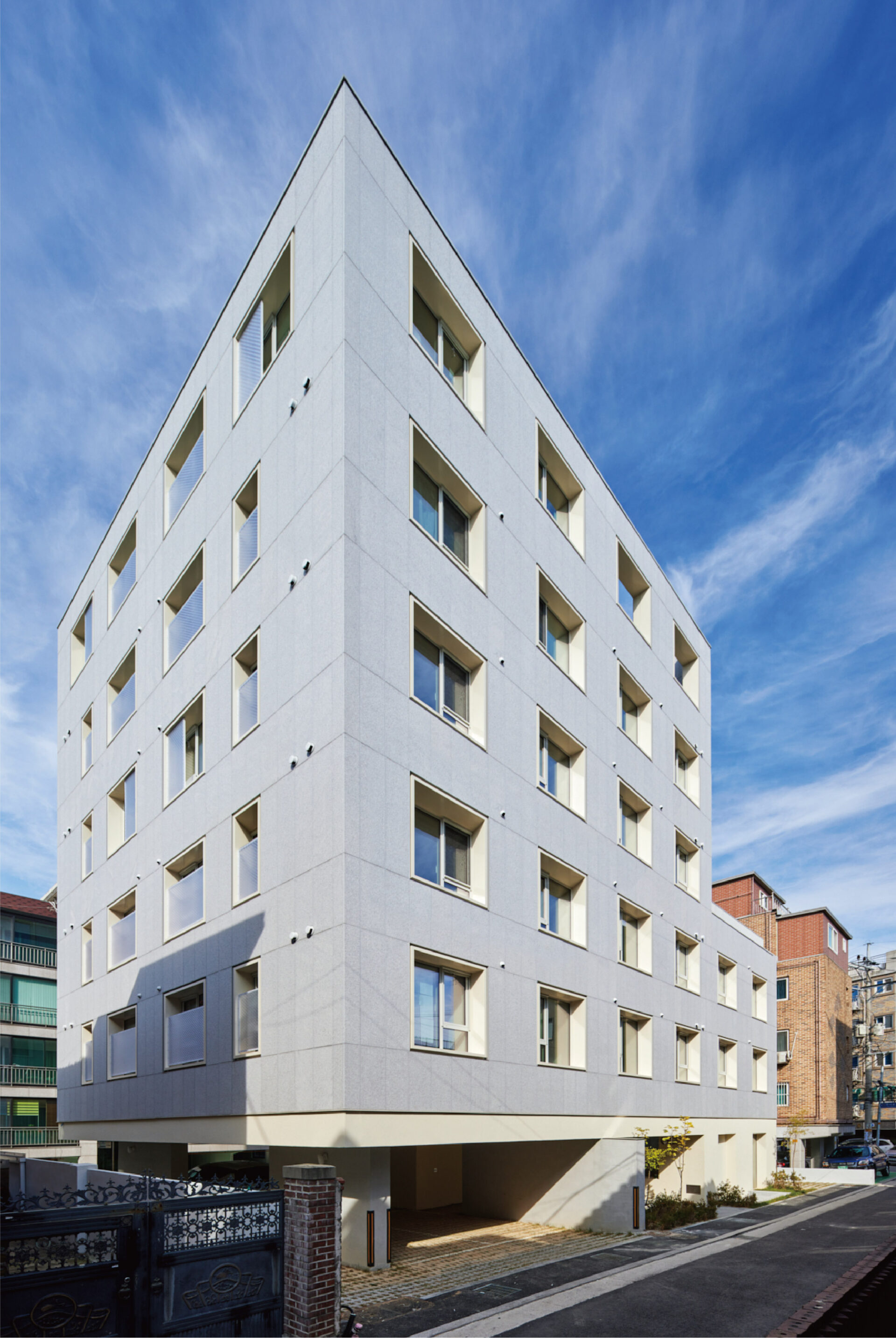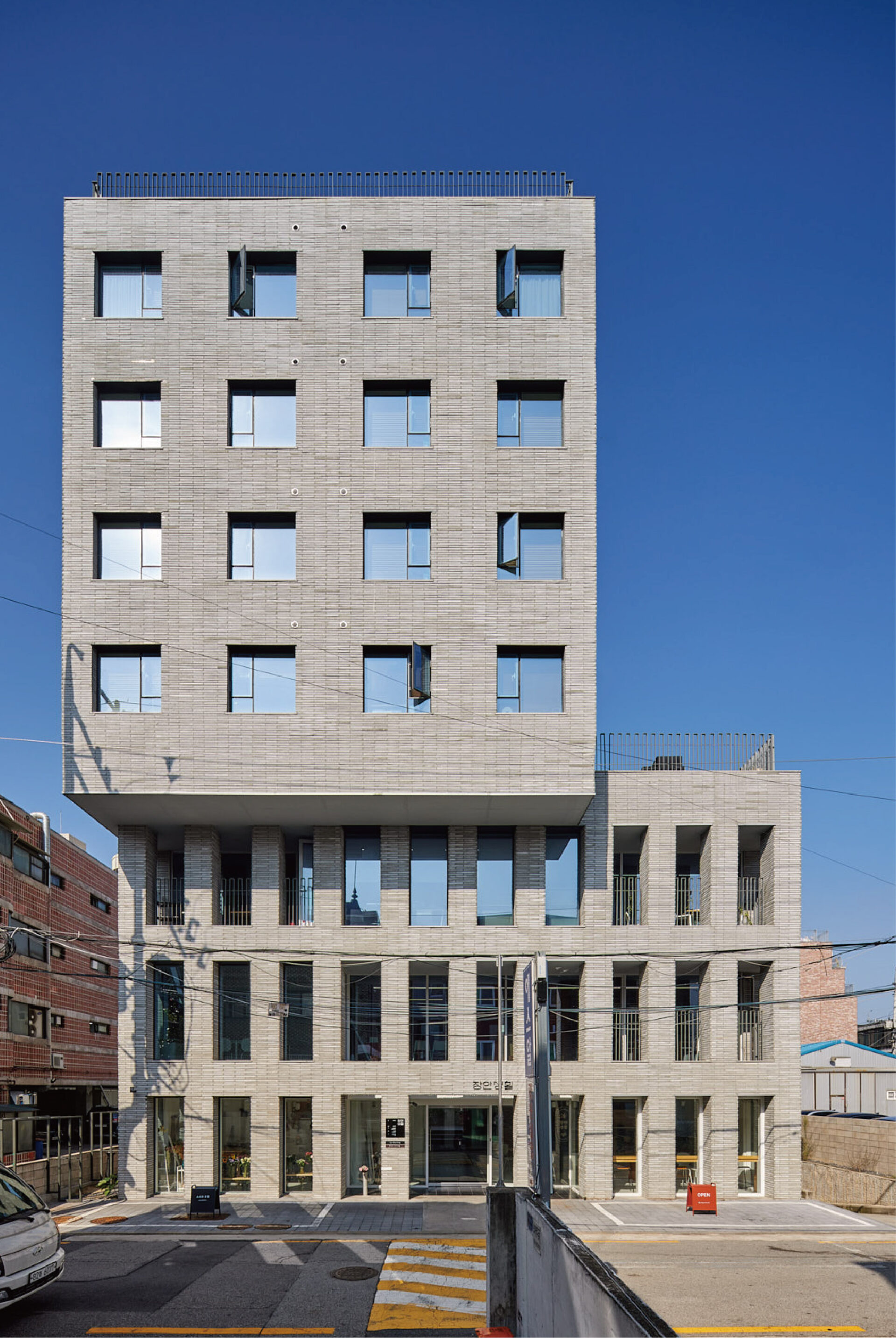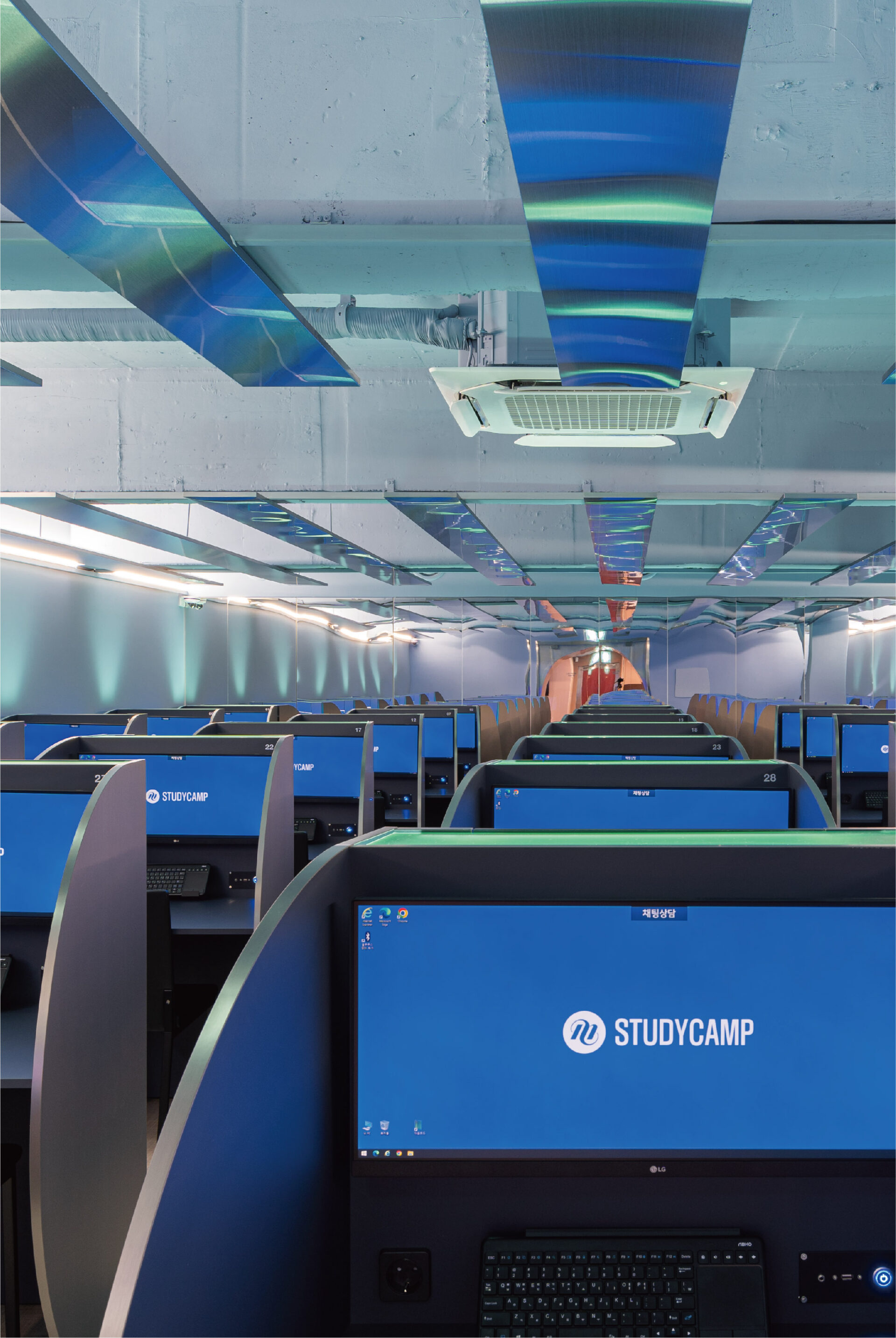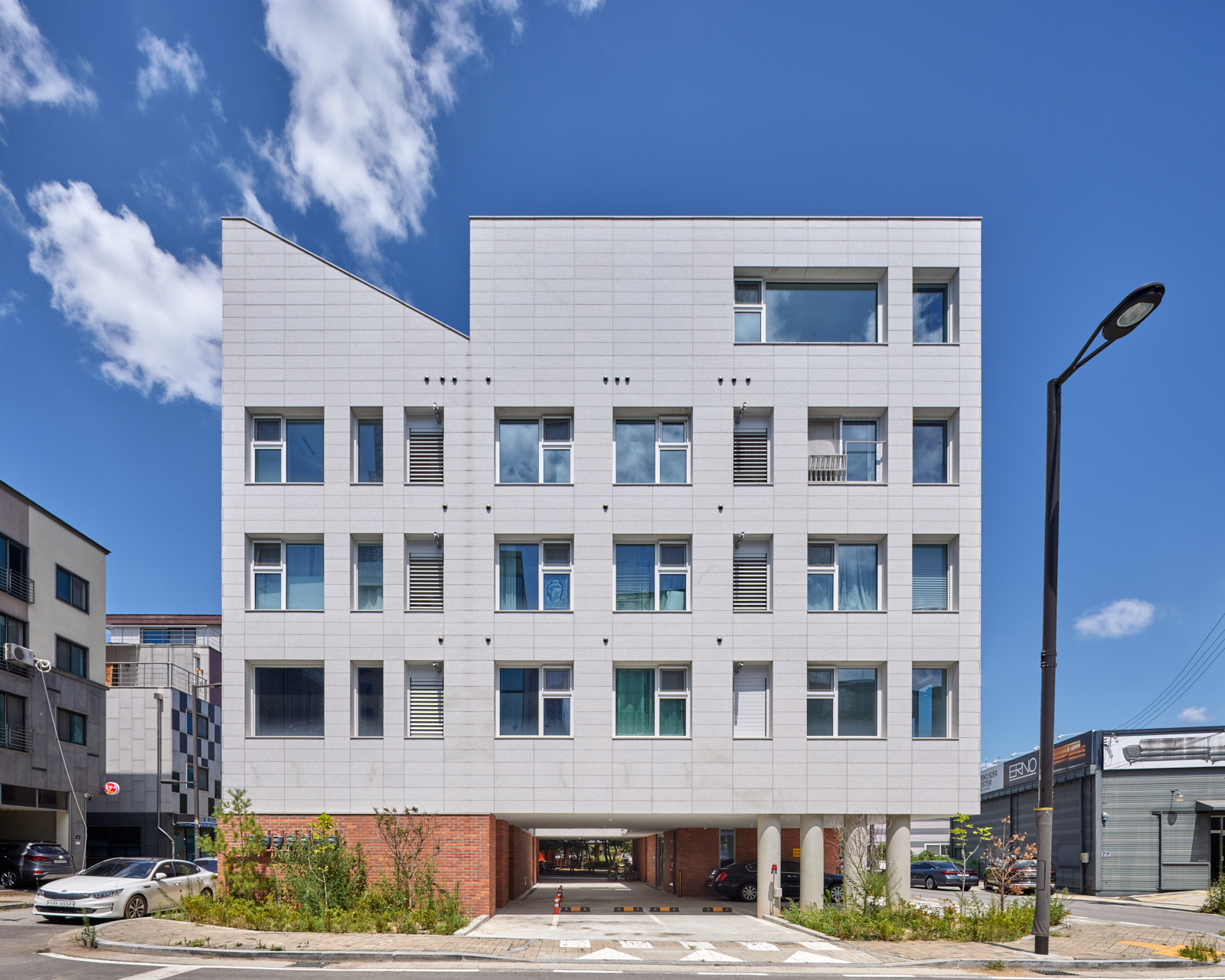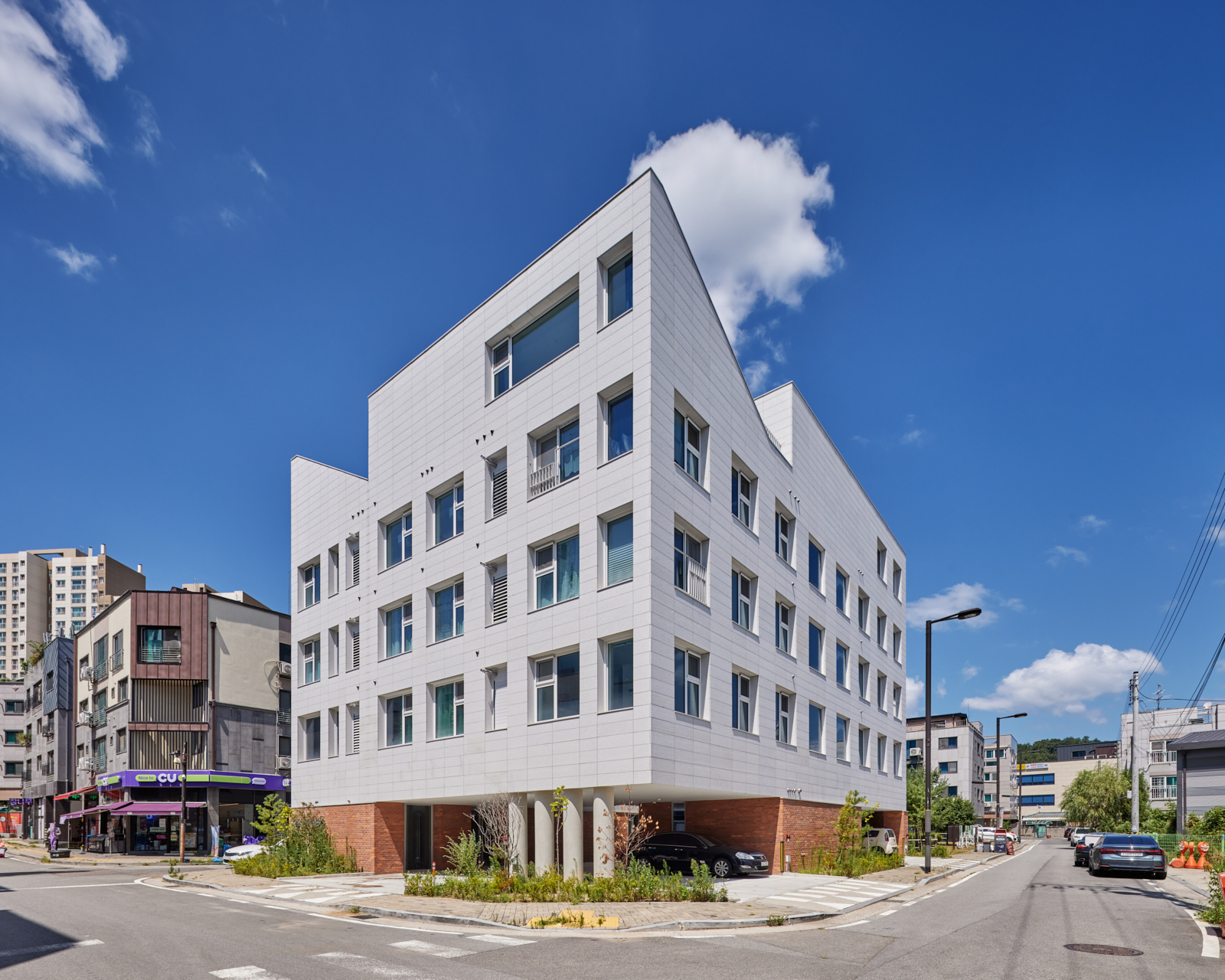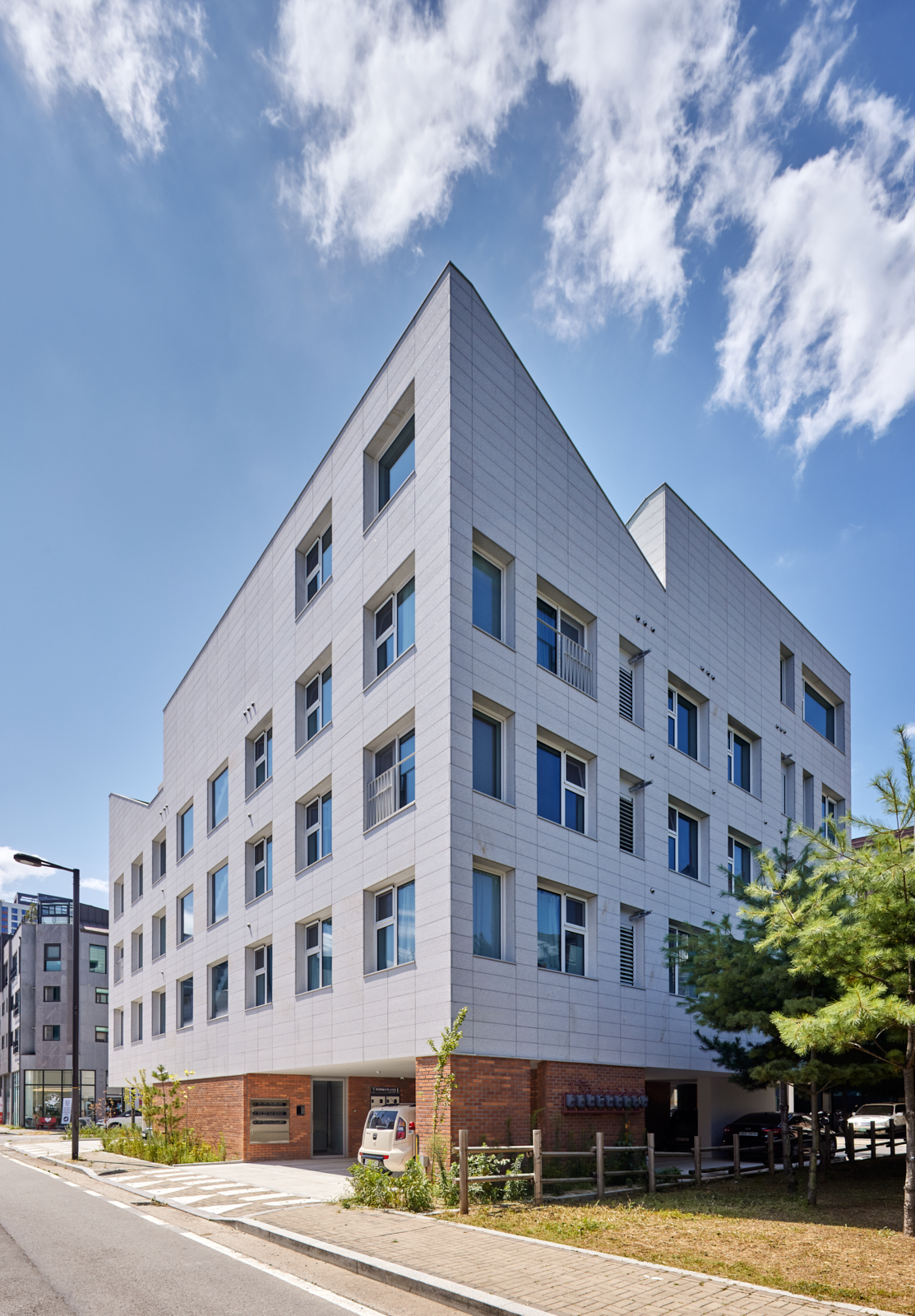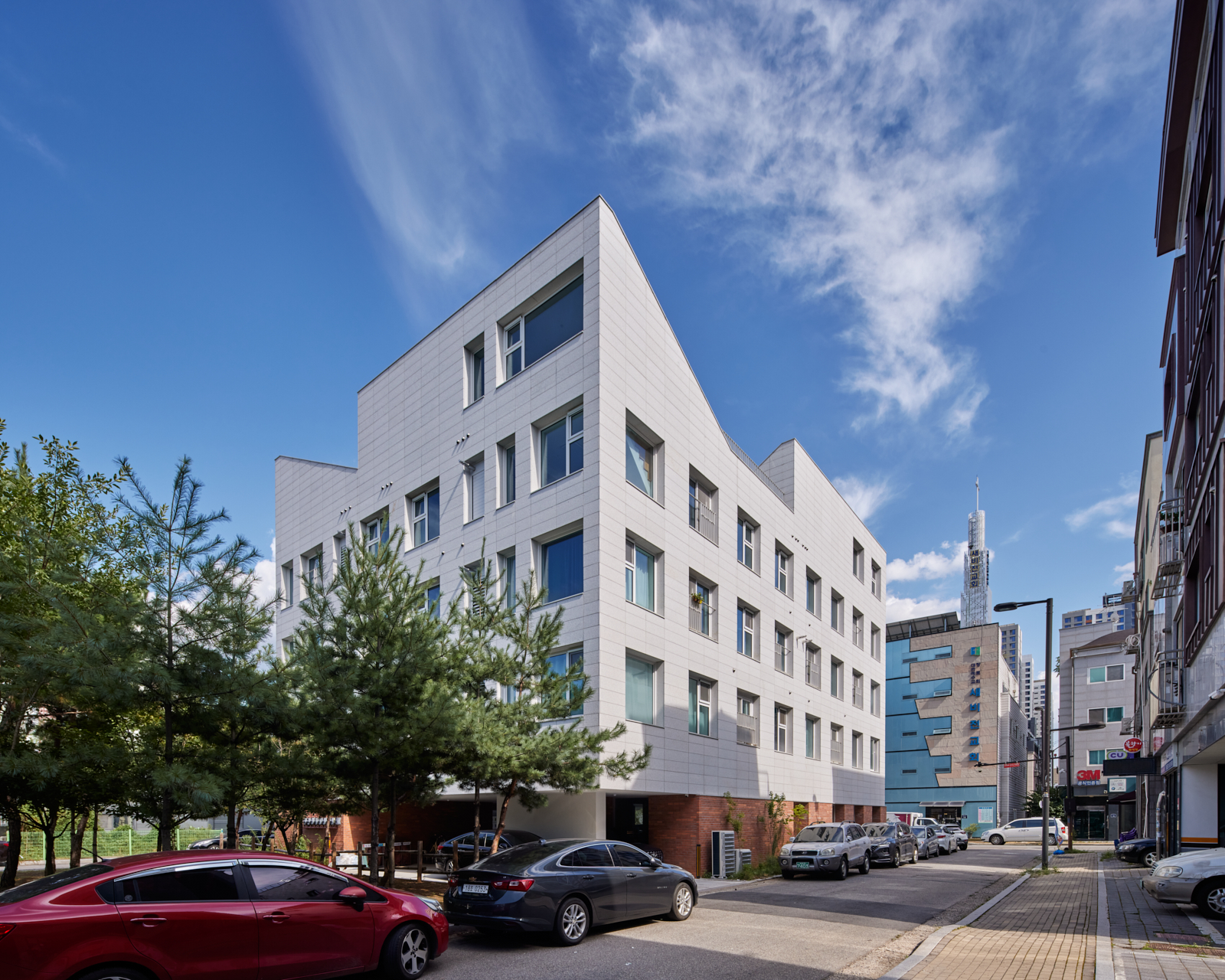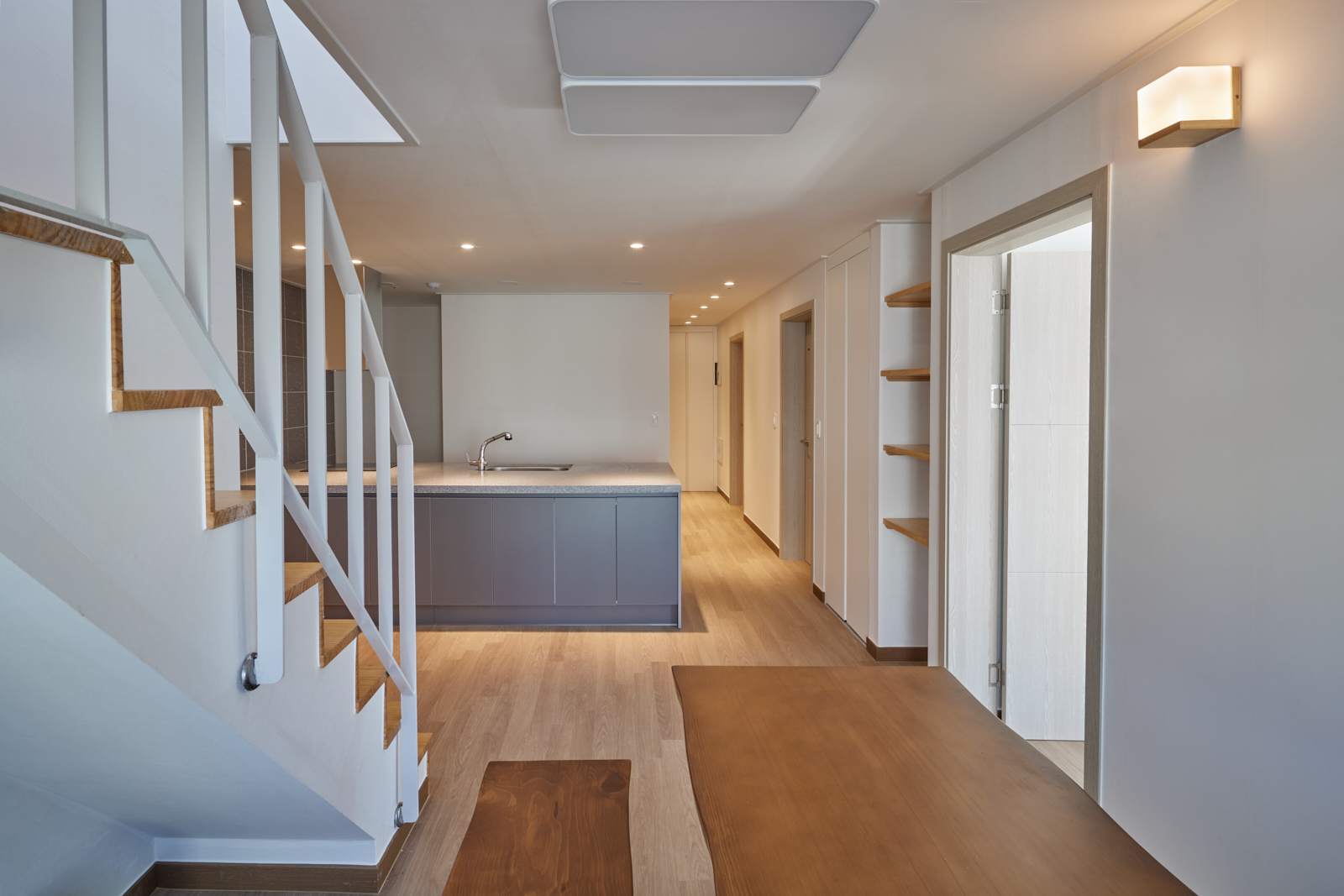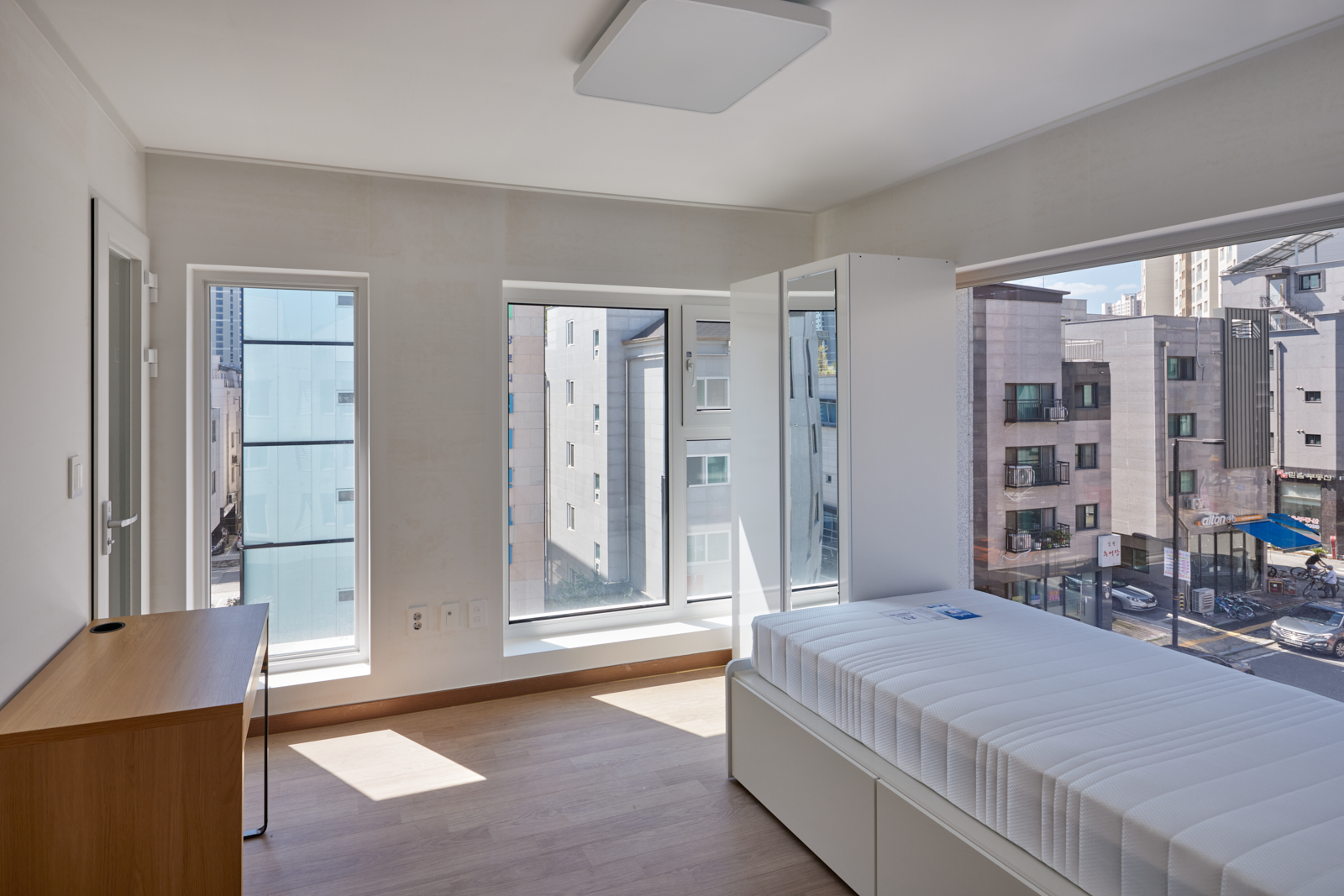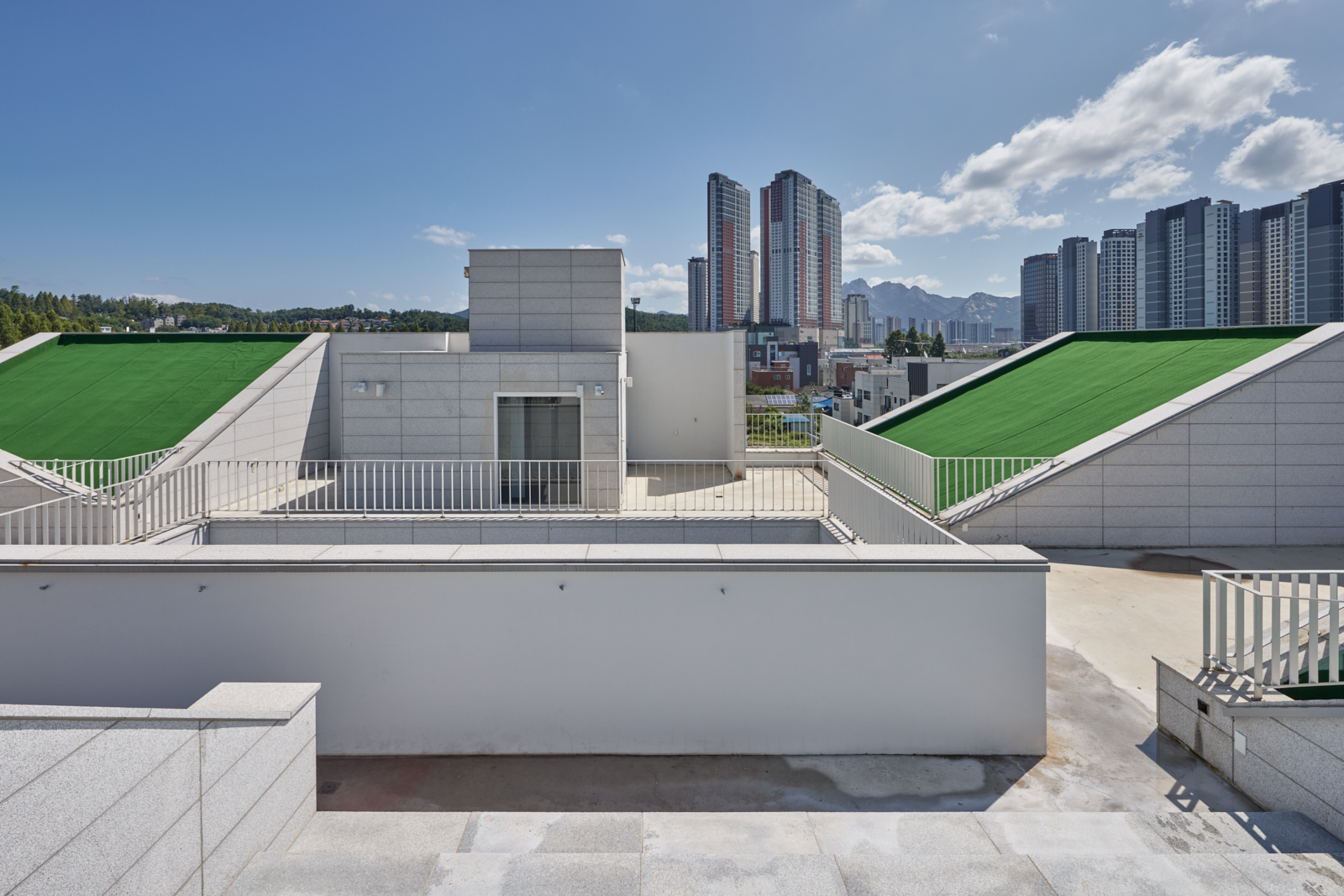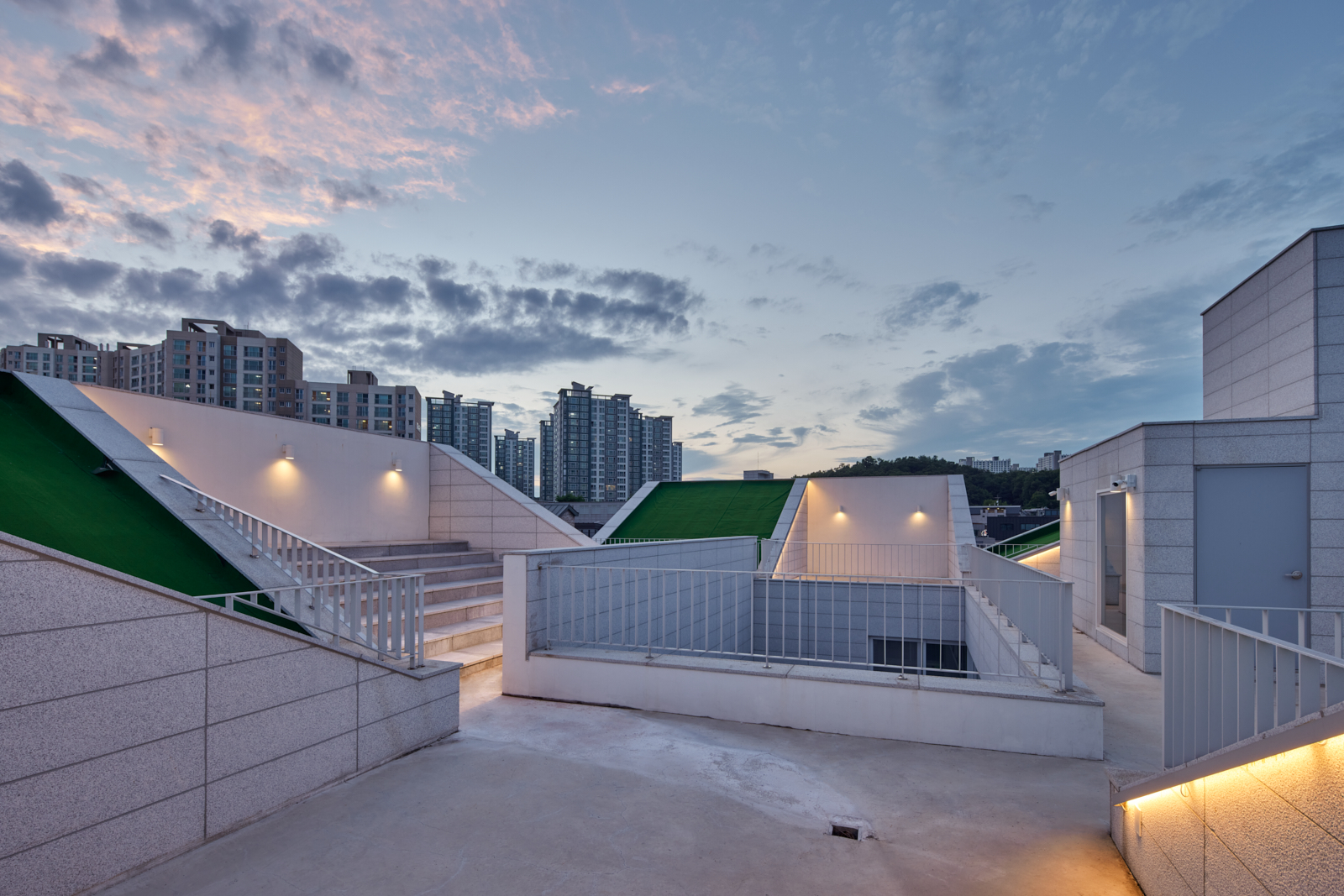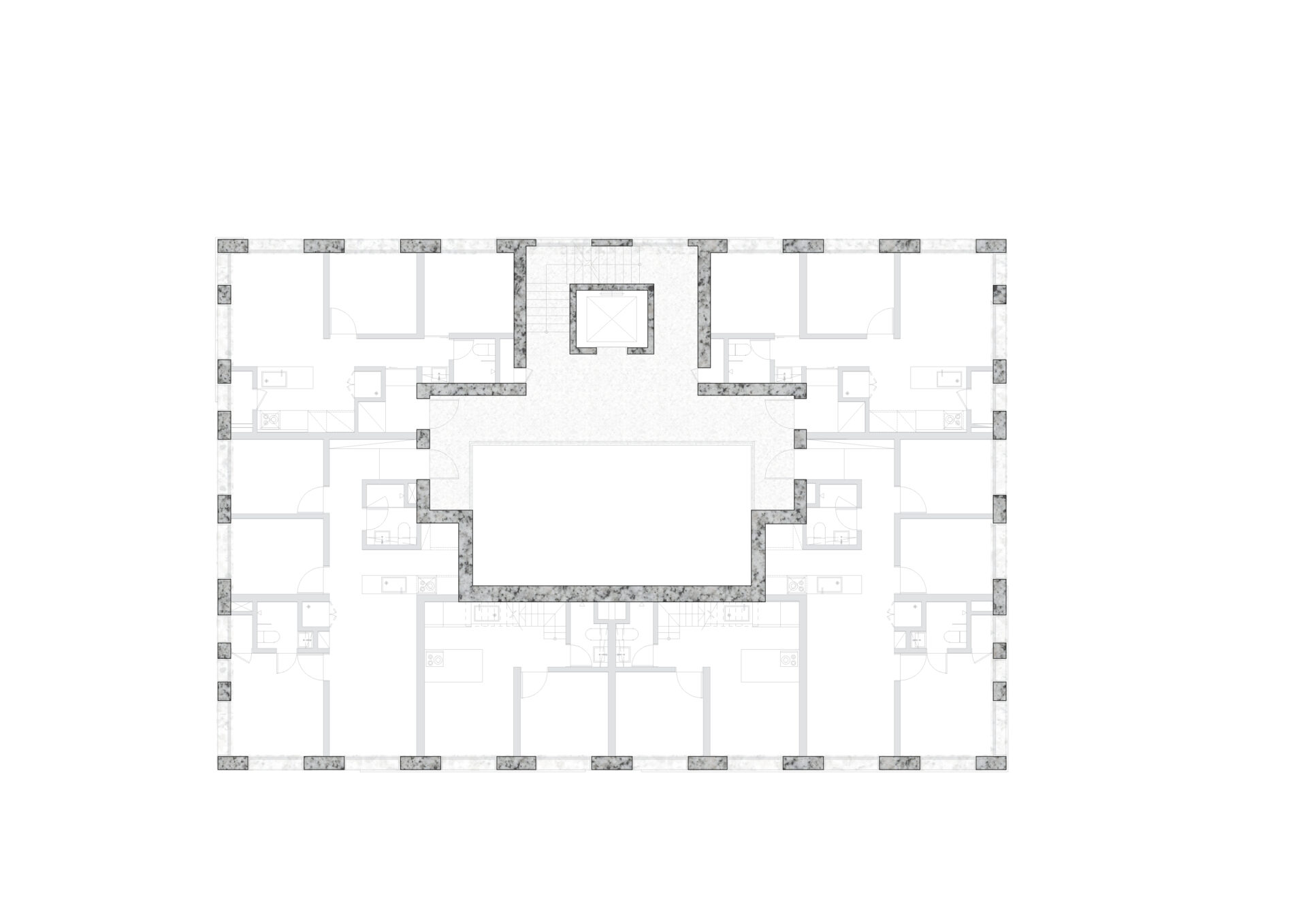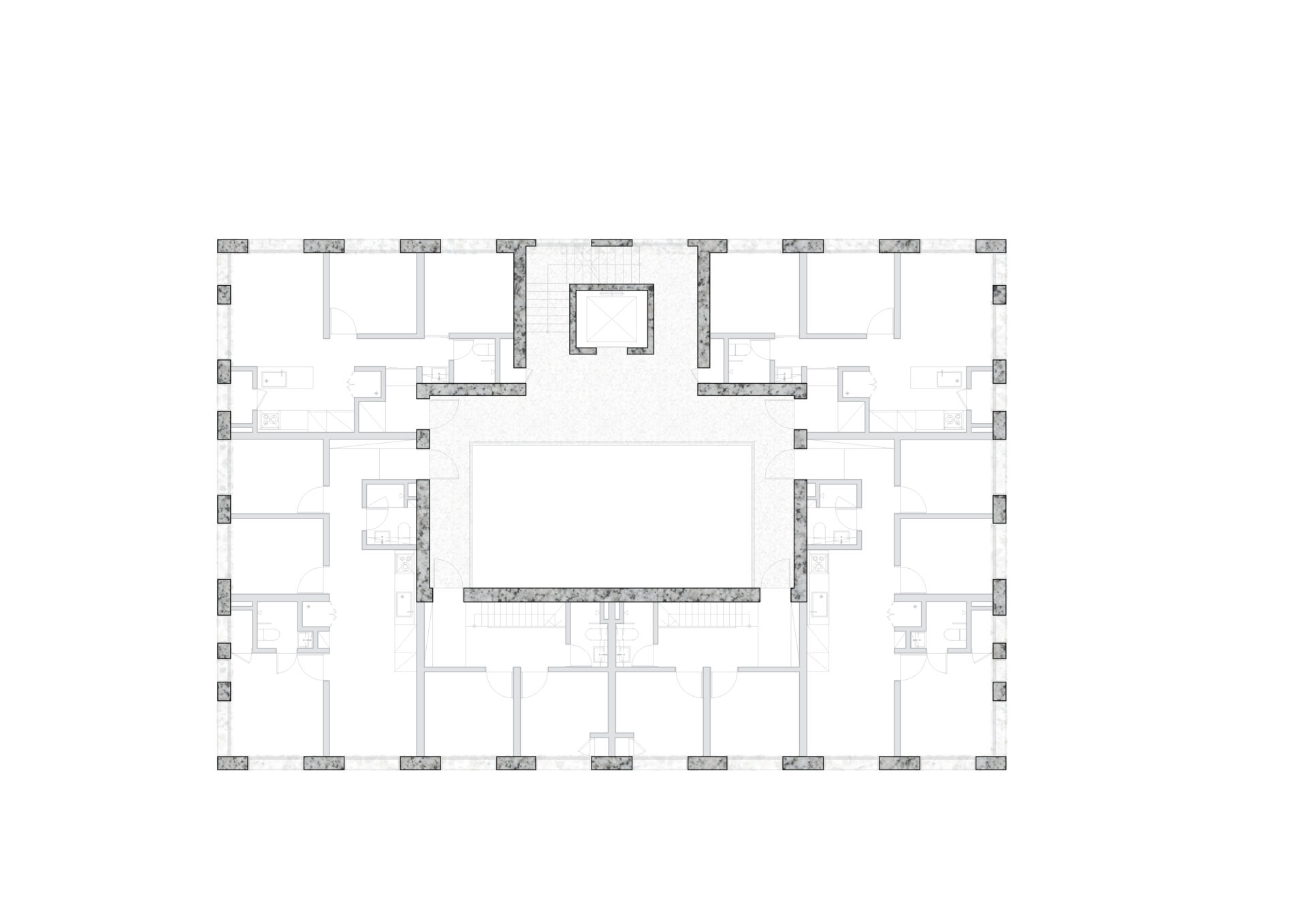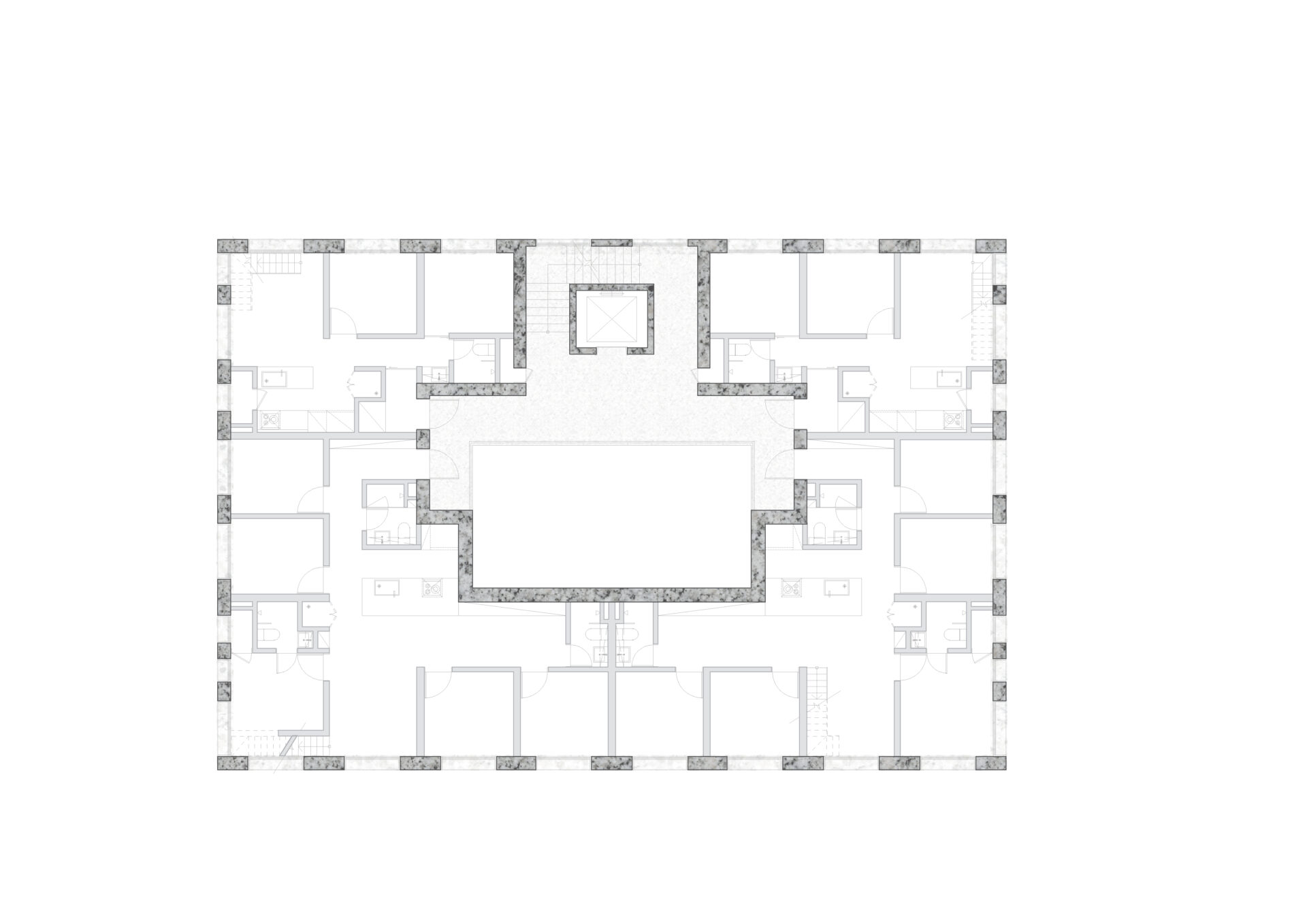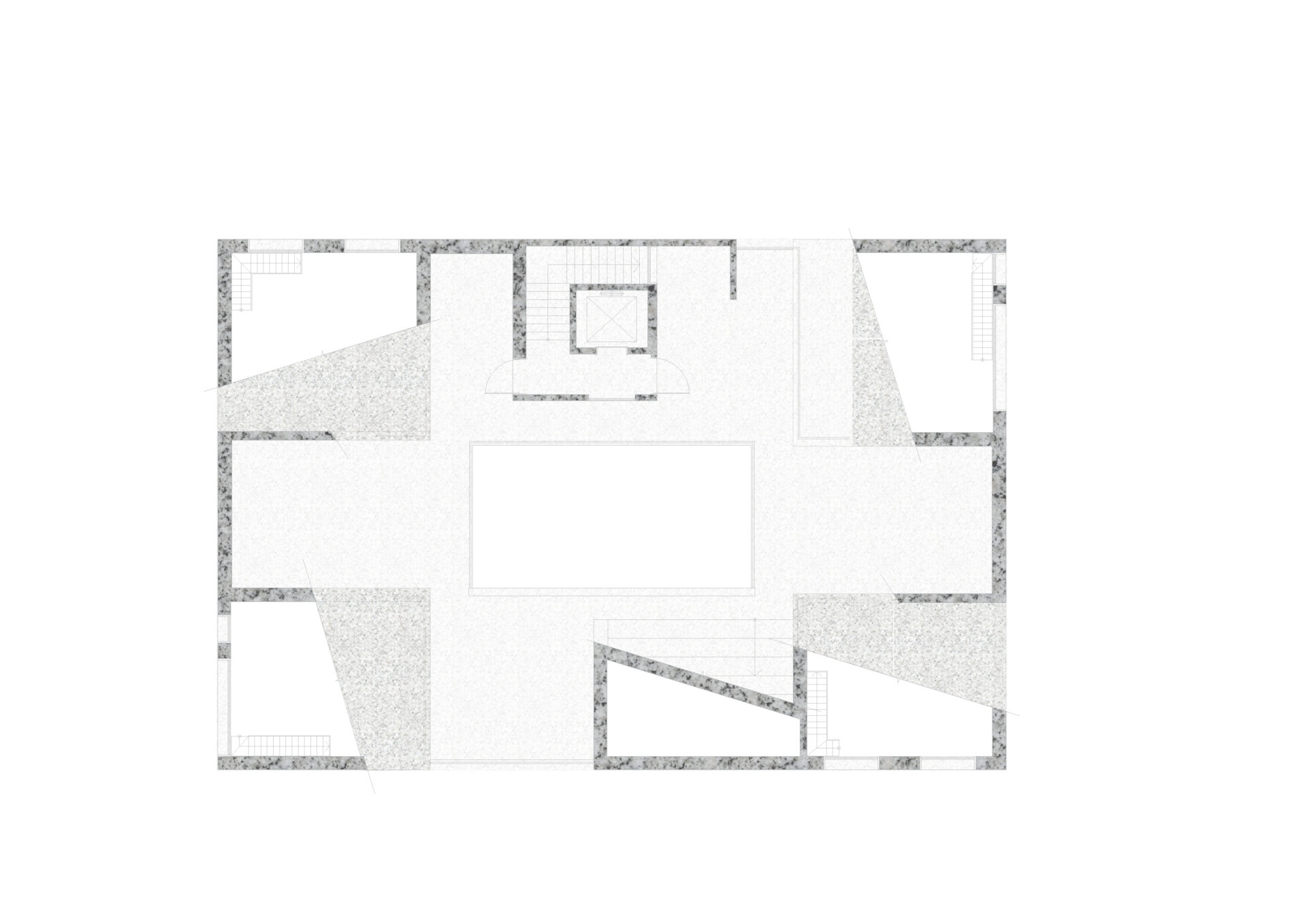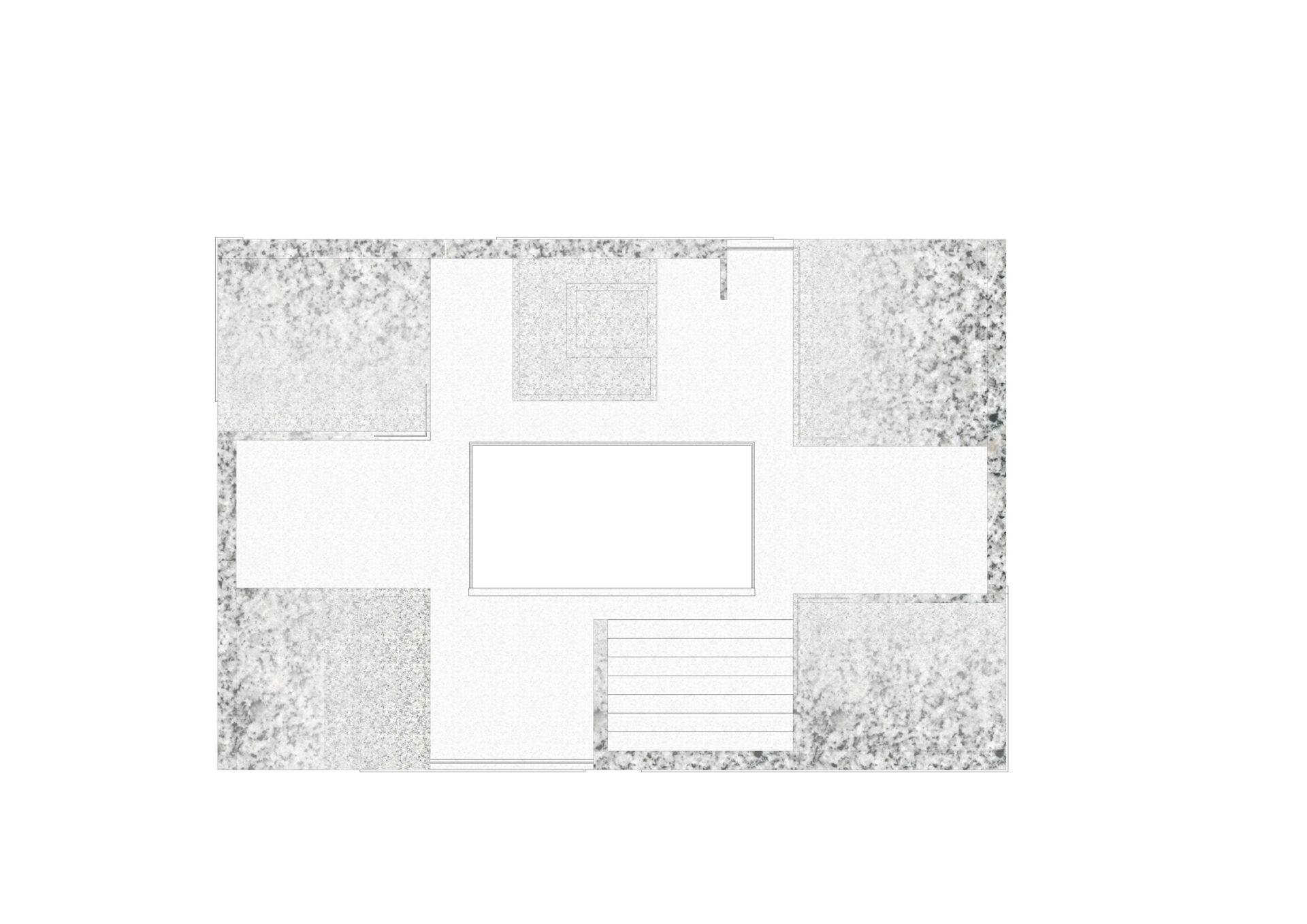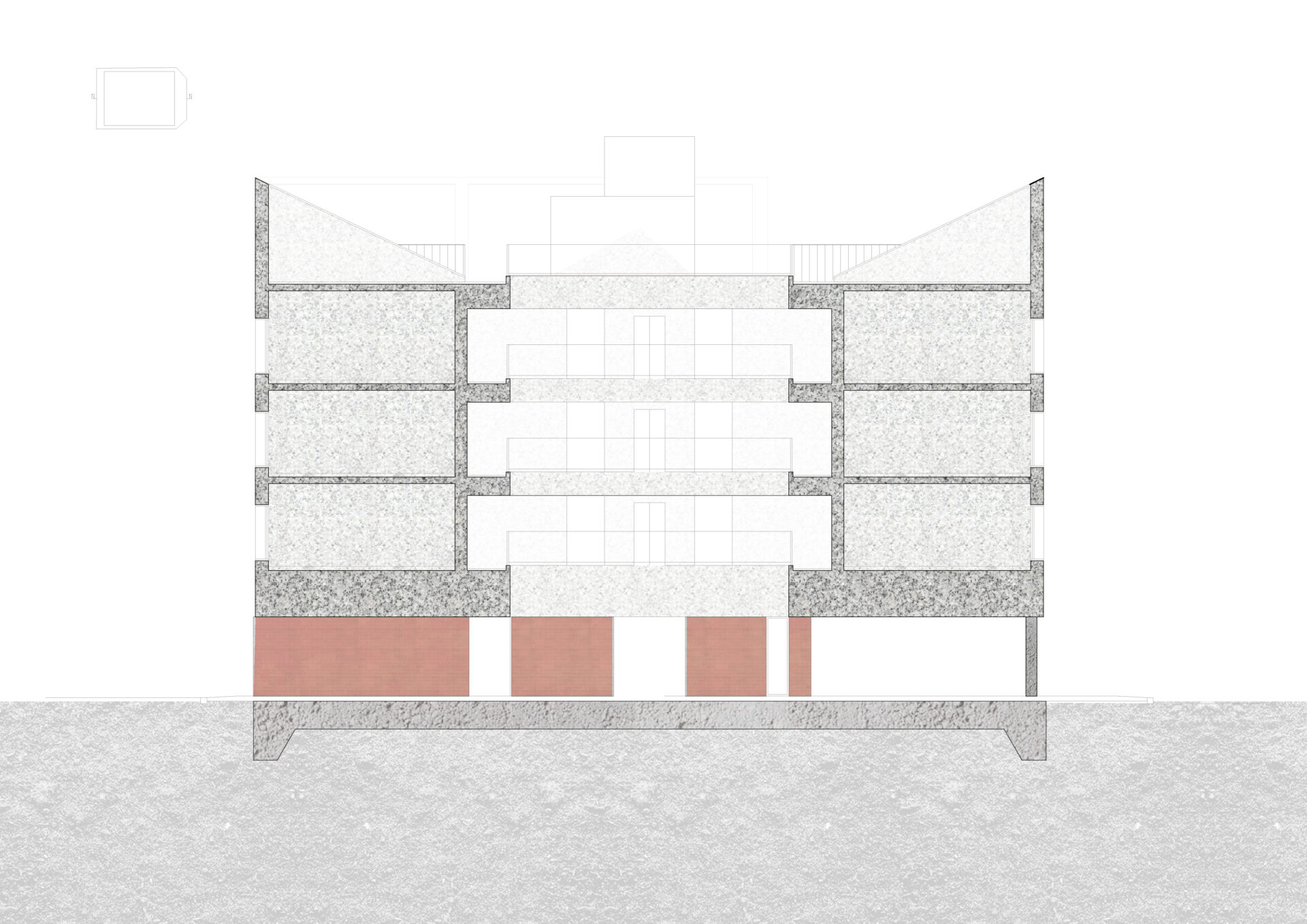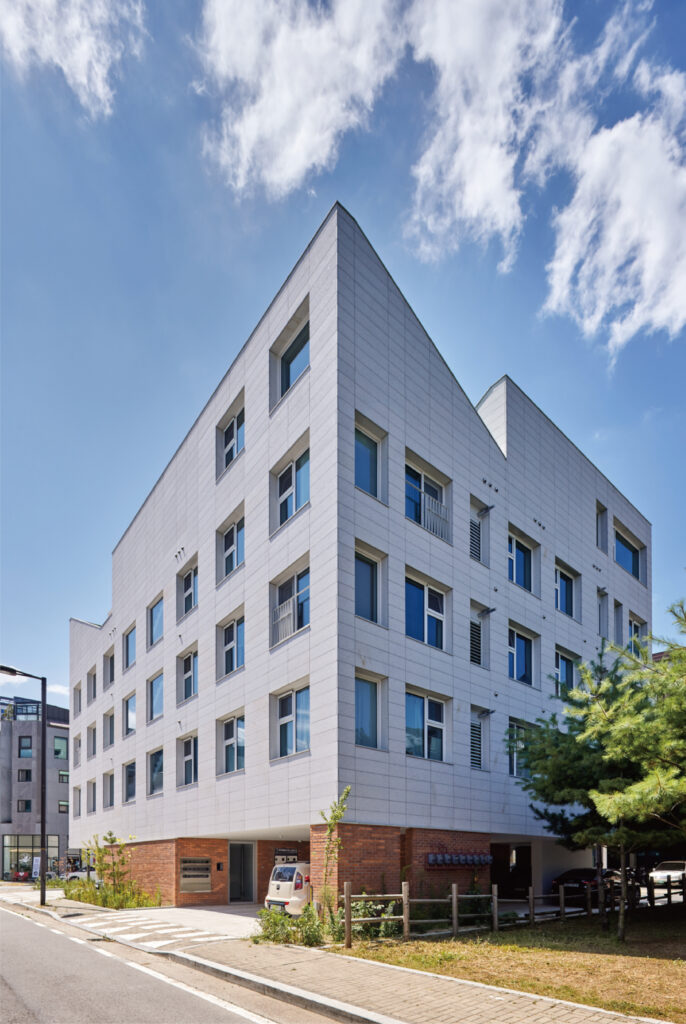
삼송동 소셜하우징
Design Director : K
Project Designer : K + D
Scale : 지상 4층
Area : 1,120sqm
Client : 녹색친구들
Construction : 녹색친구들
Principal use : 다가구주택
Photo : 노경
‘삼송동 소셜하우징’은 LH 공공지원 민간임대 주택입니다. 토지의 소유주는 LH 공사이며, 민간사업자가 건물을 지어 15년간 임대 운영하는 형태의 사업입니다. LH의 시범사업 1호였으며, 현상설계를 통해 두 대지에 대한 설계안과 운영안이 제안되었습니다.
삼송동 택지 개발로 만들어진 주거지역에 위치하고, 다가구 5가구 이하 용도 지역입니다. 토지 규모 또한 그에 맞춰 300sqm 정도로 분할되어 있습니다. 3면이 도로로 둘러싸여 있고, 나머지 한 면은 공원입니다. 계획 시점 신설된 건축협정 제도를 활용하여 두 개의 필지에 하나의 건물처럼 계획했습니다. 이를 통해 다가구의 일상적인 경험 규모를 수평적으로 2배로 확장하였으며, 건폐율을 계획적으로 사용하여 중정을 만들었습니다.
지역을 구성하는 주변 건물 대비 2배의 규모이고, 4면이 모두 도로와 공원에서 보이는 조건을 이용해 동네의 작은 기념비적 건물을 만들려고 했습니다. 지붕의 회전-반복적인 삼각형 매스는 건물 전체에 이형적이면서, 동시에 연속적인 형태를 만들고, 포천석 매스는 내부의 시각적 프라이버시를 보호하기 위해 정형적이고 반복적인 개구부를 가지고 있습니다. 이 정형적 개구부와 깊이, 그리고 지붕의 이형성은 건물 전체를 조형적 덩어리로 전환시킵니다. 이 조형적 덩어리는 1층에서 벽돌 덩어리들에 의해 지지됩니다. 상부층의 회전-반복과 중간층의 대칭과는 대비적으로 1층은 구조와 기능에 맞춰 자유롭게 구성되어 있습니다. 삼송동 형태는 단순한 기하학(회전-반복, 대칭, 구성)을 층별로 병치하여 만들었습니다.
가운데 숨겨진 중정이 필로티를 밝게 비춥니다. 중정은 외부의 수평적인 스케일과는 다르게 수직적인 공간감을 만듭니다. 각 층의 세대를 연결하는 공용 공간은 좀 더 캐쥬얼한 환경을 조성하기 위해 반 외부로 계획되었습니다. 모든 세대는 현관 문을 열면 중정이 보입니다. 세대는 초기 신혼부부가 살 수 있는 다양한 형태의 평면을 가지고 있습니다. 최상층인 4층은 복층 구조의 쉐어하우스입니다. 옥상으로 올라오면 경사 지붕을 활용해 다양한 공간으로 만든 계단식 옥상 마당이 있습니다
Social housing in Samsong is a private rental housing supported by LH(Korea Land & foHousing Corporation). The owner of the land is LH, and a private business builds a building and leases it for 15 years. It was the first pilot project of LH, and the design plan and operation plan for two sites were proposed through the housing competition.
It is located in a residential area created by residential land development from LH, and is a multi-family area with 5 or fewer households. The size of the land is also divided accordingly to about 300sqm. It is surrounded by roads on three sides, and the other side is a park. Using the newly established building agreement system, it was planned as one building on two sites. Through this, the scale of the daily experience of multi-family households(DAGAGU) was horizontally doubled, and a courtyard was created by using the building-to-land ratio deliberately.
It is twice the size of the surrounding buildings that make up the area, and we tried to make a small monumental building in the neighborhood by using the condition that all four sides can see from the road and the park. The rotational-repeated triangular mass of the roof creates a heterogeneous and at the same time continuous form throughout the building, and the Pocheonseok(most common local stone) mass has a formal and repeating opening to protect the visual privacy of the interior. These formal openings and depths and the heterogeneity of the roof transform the entire building into a formative mass. This formative mass is supported by blocks of bricks on the first floor. In contrast to the rotational-repetition of the upper floor and the symmetry of the middle floor, the first floor is freely configured according to its structure and function. The shape of building was created by juxtaposing simple geometry (rotational-repeat, symmetry, composition) layer by layer.
A central hidden lightwell illuminates the piloti. Unlike the horizontal scale of the exterior, the lightwell creates a vertical sense of space. The stair and corridor space connecting the households on each floor is planned as outside to create a more casual environment. All households see the lightwell when the front door is opened. The household has various types of floor plans for the early newlyweds to live in. The top floor, the 4th floor, is a two-story share house.
When you go up to the roof, there is a terraced roof yard that uses a sloped roof to create various spaces.
Other projects


